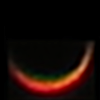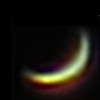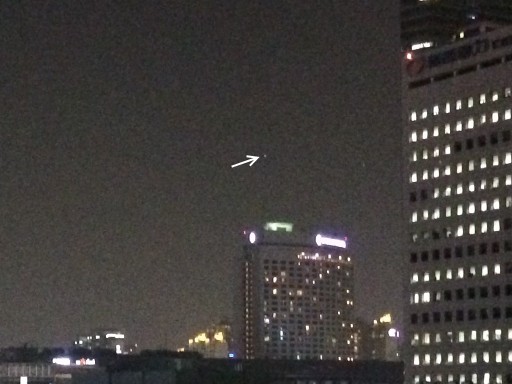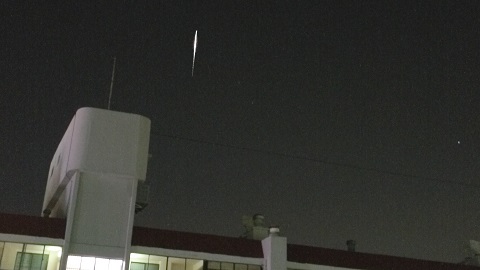Entries tagged as astronomy
camera Moon Sanyo VPC-C4 satellite Minolta Dimage X20 binoculars Chuseok telescope eclipse Kodak Z1085 IS star Sun iPhone 4 A1533 iPhone 5S slow motion A1530 LTE iOS iPhone 4S sound Celine Chung electric fan LED light trail M&M's A1524 iPhone 6 Plus OIS Cortex Camera Focus Pixels A1522 A1549 A1586 barometer belt case iOS 8 iPad iPad mini iPhone 3GS iPhone 5 iPhone 5C iPhone 6 KT LGU+ Canon SX50 HS ISS Canon EOS 450D planet Venus Alhena constellation Iridium Jupiter Orion Mars China Korea lunar calendar Bushnell 8x40 fog Naju iPhone 7 Plus Bitgaram City Sony A5000 beach firework Ulsan Nikon CoolPix P1000 almond nuts walnut flare MetOp-A Ursa Minor KPX Celestron NexStar 6SE Snapzoom asteroid Josephina Neptune Triton Saturn teleconverter duck Hayun Chung river Sung-Eun Kim Yeongsan cafeteria ice persimmon Korean dress rice cake beverage chocolate HT-Mini v2 toy dwarf planet Pluto Jeonnam Science Festival Messier 11 Messier 2 adapter iPhone 6S Plus artificial star collimation Andromeda focal reducer galaxy iPhone 11 Pro Singapore travel Uranus Hiroshima iPhone 16 Pro Japan Lyra airplane Boötes Leo Minor Ursa Major Bode's Galaxy Cigar Galaxy iOptron SkyTracker Ceres Heze Vesta Zeta Virginis C/2014 Q2 Lovejoy comet nebula Taurus road shade cat assembly kit car cup Starbucks Bolt EV electric SpaceX electric vehicle Sight Knight visor Jeonju iPhone 13 Pro Gunsan space station Tiangong 3DMark Geekbench Octane SunSpider Touch ID battery PeaceKeeper charger box iPhone 6+ iPhone 7 Raynox DCR-1540PRO Vivitar 2.0X lightning C/2013 R1 Lovejoy CHDK Nikon D3300 Samyang Polar 800mm Toast TP-2 Milky Way iPhone X meteor shower Perseids Scorpius cable magnet Micro-USB USB Apple Watch Bluetooth GPS pen dock earphone speaker rain satellite TV shower television water apple Seoul shopping Yongsan iOS 13 memory MicroSD storage card reader mouse electricity Goheung Naro Space Center Dragon expressway parking lot service area Boeing Daejeon international spacecraft AT&T SK Telecom fingerprint sensor M7 pedometer Kraken performance accelerometer compass gyroscope Han-gang passcode Kiwi Fotos KF-8012N smog COEX Samseong skyline subway contamination Heathrow Airport London Wesley Woo-Duk Hwang-Chung anchovy snack airport Gimpo Lotte World Seoul National University kids cafe Lego Petit Monde instant noodles ramyeon Africa Benin gas station toll gate game Korean Air cloud Asiana Airlines Coca Cola emergency soda Tokyo building Bode’s Galaxy Sombrero Galaxy light fixture iPhone XS Christmas tree decoration balls lights sled snow screwdriver table cookie milk Oreo Homeplus pizza chocolate chip cookies couch FaceTime New Year's Day Skype tteokguk computer swing Toys R Us trampoline Mega Kids Box Megabox movie theatre tortilla wrap toothbrush salad Disney Frozen remote controlled helicopter repair replacement Syma S107G Danish butter cookies animation Larva shopping cart ball bed globe headphones pink breakfast rice porridge Lunar New Year traditional Korean dress Hyung-Bae Kim kite sausage Cloud Cuckoo Palace Princess Unikitty The Lego Movie Evil Robot playground slide dinosaur InoQ Tyrannosaurus 3D printing hot-end Makibox squirrel bunny balloon Jenga 123D Design Autodesk coin Electric Love Marathon heart Tayo Christmas Octonauts play set present apple tree Financial Museum Kwangju Bank vegetable Pop Up Pirate Anna Elsa Gwangju princess
Venus coming close to Earth
Posted by Wesley on
Venus gets really close
This photo I took over the weekend is the one last good look at the planet before it shows up in the morning instead of evening. It's gotten quite big and was still relatively bright against the dusk.
Device: Canon SX50 HS
Settings: 1200mm (2x enlarged) - ISO 160 - 1/10s - f/4.5
Time: 2014-01-04 18:02 KST
Location: Suwon, Korea
55 photos stacked with RegiStax 6.1.0.8
Iridium 52 satellite flare
Posted by Wesley onIn contrast to the flare spotted in the less light-polluted spot, Iridium 52's flare in the low altitude among one of the heaviest light pollution in the country is far less dramatic. Even the -5.2 magnitude brightness is nearly washed away in the background. See the YouTube video below for the faint flare in action.
Device: iPhone 5S
Settings: 30mm - ISO 1250 - 1/15s - f/2.2
Time: 2013-12-24 18:29 KST
Location: Seoul, Korea
Iridium 40 satellite flare
Posted by Wesley onWhile visiting Ulsan, there was a bright flare at -6.4 magnitude of the Iridium 40 satellite in the southern sky last evening. It was so bright that my iPhone 5S had no problem recording it in its burst mode (10fps at 8 megapixels). It was quite a sight to see. Here are two ways of seeing it in action:
1. Youtube Video
2. Animated GIF (click the thumbnail)
Device: iPhone 5S
Settings: 30mm - ISO 2500 - 1/15s - f/2.2
Time: 2013-12-27 18:38 KST
Location: Ulsan, Korea
Venus as seen on last weekend
Posted by Wesley on
Golden crescent of Venus
Settings: Canon SX50 HS - 1200mm (2x enlarged) - ISO 80 - 1/250s - f/6.5
Filters: None
Time: 2013-12-21 18:04 KST
Location: Suwon, Korea
32 photos stacked with RegiStax 6.1.0.8



